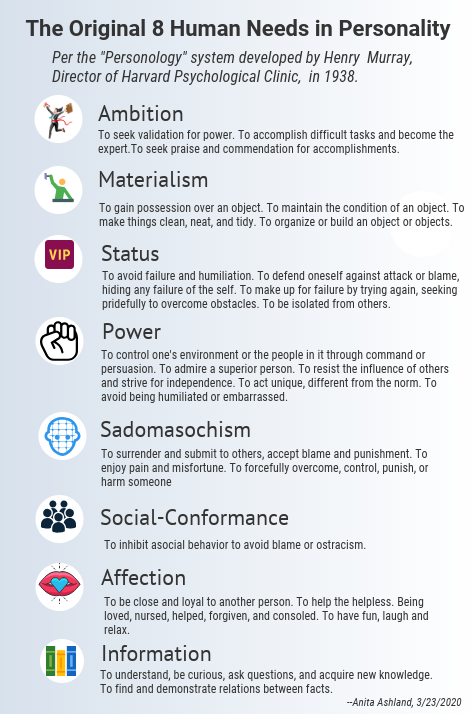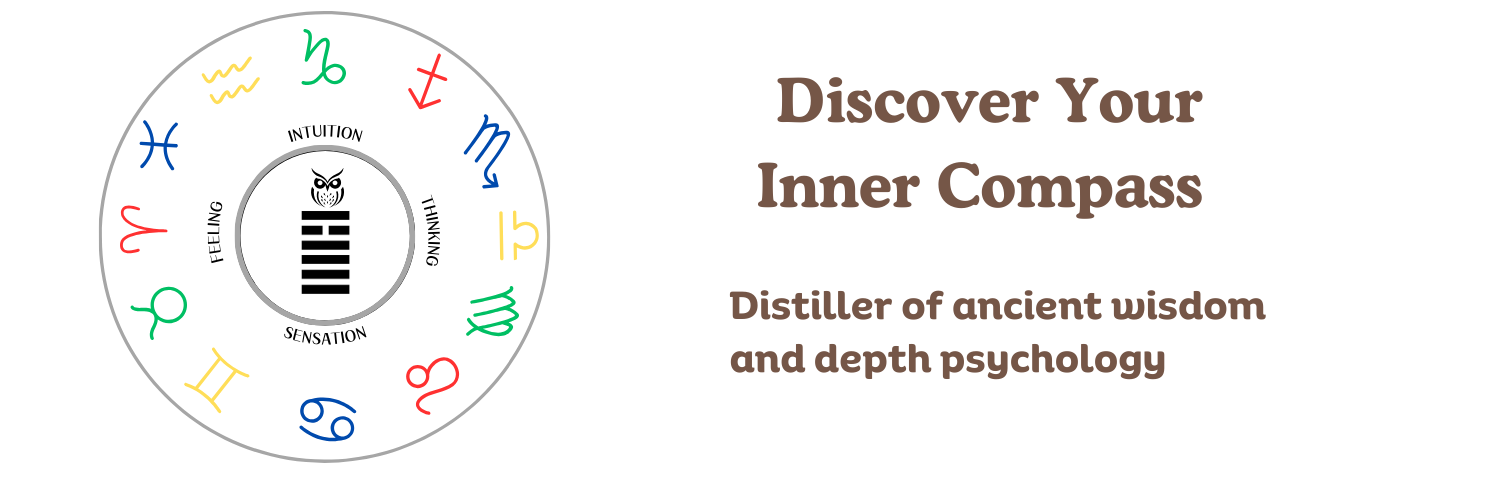Objective Personality isn’t the first to use human needs in personality typing. Perhaps you’ll see some correlations to the four Objective Personality human needs (tribe, identity, control, gather) in these.
Back in 1938, Henry Murray, when he was director of the Harvard Psychology Clinic, developed a personality system based on needs called “personology.” He believed that everyone has a set of universal basic needs, with the uniqueness of an individual’s personality coming from certain needs being more important than others to the individual.
Murray was heavily influenced by Carl Jung and his theory of personality was rooted in psychoanalysis. His work influenced Abraham Maslow in his development of the hierarchy of needs.
The precursor to the CIA (the OSS) paid Murray to write an analysis of Hitler’s personality, drawing from biographies and classified reports.
A short time later he purchased test booklets and answer keys from Isabel Myers. He led a team of wartime psychologists to match agents to missions that best suited their personalities.
The prospective agents came to a farm in Pennsylvania and their real identities weren’t revealed to the others. Murray claimed this anonymity was the only way “to see the person whole and to see him real.”
This operation was all hush-hush and local residents wondered if the farm was an army asylum. There were also rumors that the farm inhabitants were Nazi sympathizers and communists.
The prospective agents were given dozens of assessments, including MBTI. “The staff assigned each subject a role they did not believe he could fulfill successfully based on his personal history, a role that would generate a good deal of tension, anxiety, and embarrassment, thereby short-circuiting each man’s ability to reflect on and alter his natural pattern of behavior.”
Personology was far more nuanced than just the 8 main human needs. He divided them into several binary categories with various secondary needs.
Here are the 8 main needs:

Personology had five principles: 1.) Cerebral physiology; 2.) People cycle between seeking excitement and then relaxing; 3.) An individual’s personality develops over time; 4.) Personality is not fixed and can change; 5.) Each person has unique characteristics and others which are shared by others.
The system of needs influenced the creation of personality tests. By 1956, 60% of corporations were using personality tests. A personality assessment test Murray created, called Thematic Apperception Test (TAT), is still in use today. It uses pictures and the subject is asked to tell a story. The assessor infers personality characteristics from the storytelling.
Murray believed the study of personality should look at the entire person over their whole lifespan. He wrote, “The assessment of men…is the scientific art of arriving at sufficient conclusions from insufficient data.”
_____
Source:
The Personality Brokers: The Strange History of Myers-Briggs and the Birth of Personality Testing by Merve Emre
